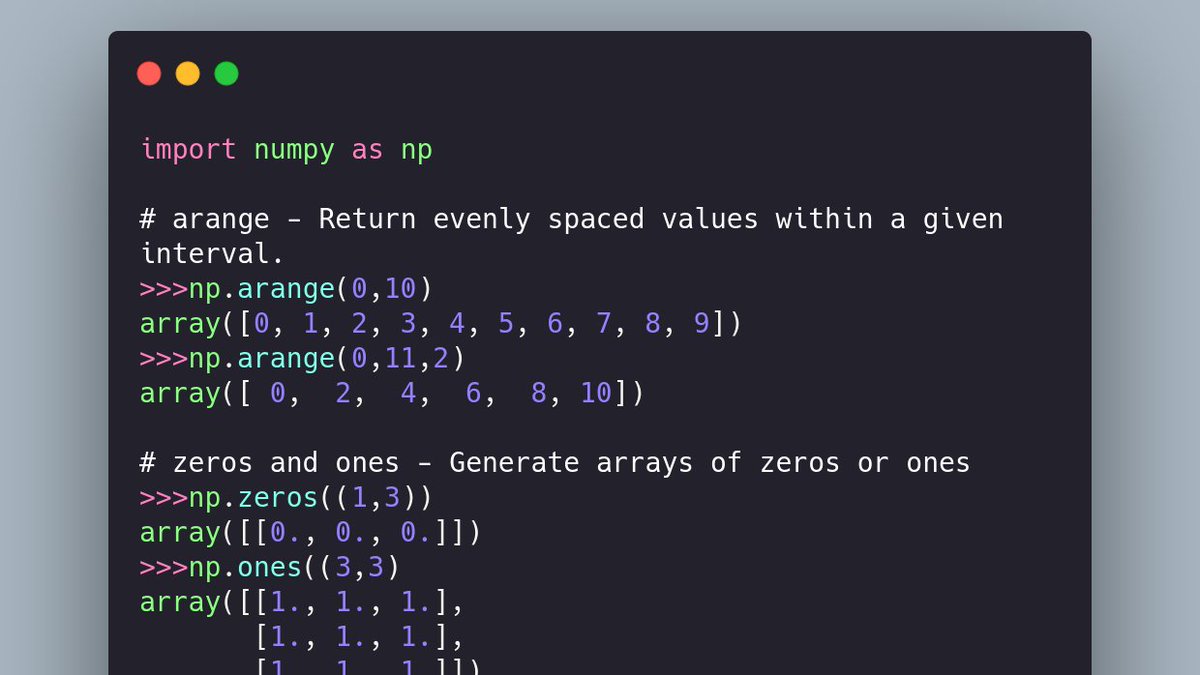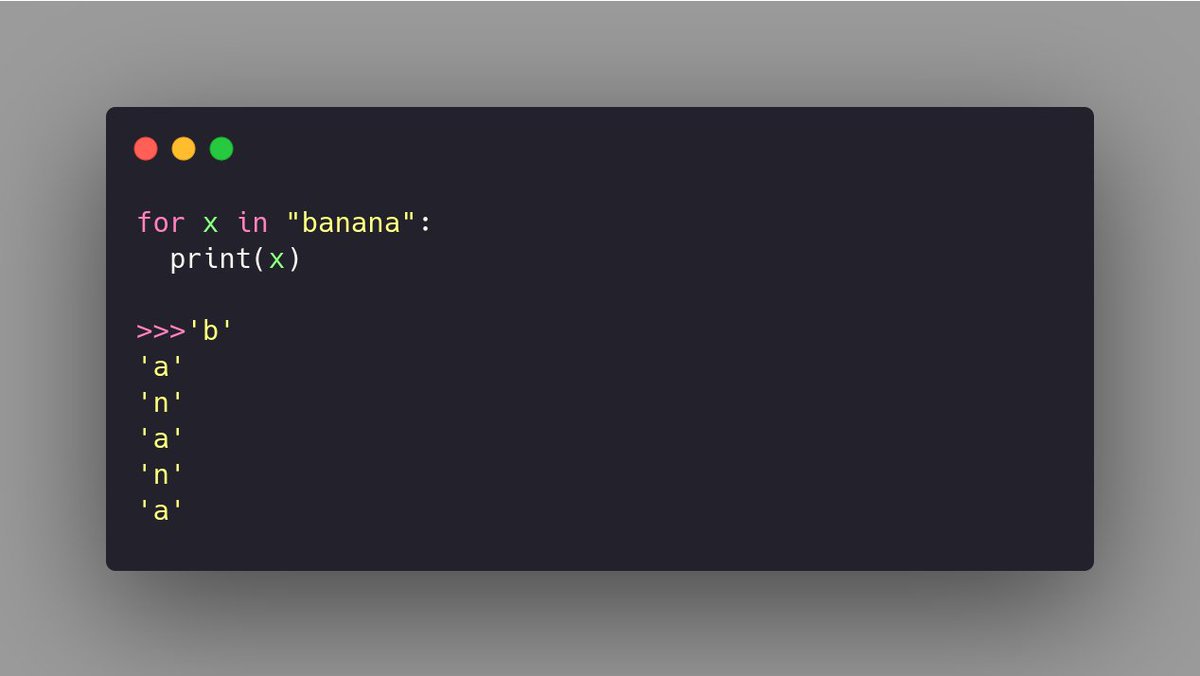
NumPy 🔥
It is a Linear Algebra Library for #Python, the reason it is so important for Data Science is that almost all of the libraries in the PyData Ecosystem rely on NumPy as one of their main building blocks👨🏫.
Here's everything you need🧵👇
#DataScience #100DaysOfCode
It is a Linear Algebra Library for #Python, the reason it is so important for Data Science is that almost all of the libraries in the PyData Ecosystem rely on NumPy as one of their main building blocks👨🏫.
Here's everything you need🧵👇
#DataScience #100DaysOfCode
1⃣Numpy Arrays
NumPy arrays are the main way we use Numpy. Numpy arrays essentially come in two flavors: vectors and matrices. Vectors are strictly 1-d arrays and matrices are 2-d (but you should note a matrix can still have only one row or one column).
NumPy arrays are the main way we use Numpy. Numpy arrays essentially come in two flavors: vectors and matrices. Vectors are strictly 1-d arrays and matrices are 2-d (but you should note a matrix can still have only one row or one column).

2⃣Built-in Methods
There are lots of built-in ways to generate Arrays
- zeros
- ones
- eye
- arange
- linspace
There are lots of built-in ways to generate Arrays
- zeros
- ones
- eye
- arange
- linspace

4⃣Array Attributes and Methods
Let's discuss some useful attributes and methods of an array:
- shape
- reshape
- max
- min
- std
- var
Let's discuss some useful attributes and methods of an array:
- shape
- reshape
- max
- min
- std
- var

5⃣Arithmetic
You can easily perform array with array arithmetic, or scalar with array arithmetic. Let's see some examples:
You can easily perform array with array arithmetic, or scalar with array arithmetic. Let's see some examples:

6⃣Universal Array Functions
Numpy comes with many universal array functions, which are essentially just mathematical operations you can use to perform the operation across the array. Let's show some common ones:
Numpy comes with many universal array functions, which are essentially just mathematical operations you can use to perform the operation across the array. Let's show some common ones:

That's it for the thread 👋
A retweet for the first one would really mean a lot 🙏
Follow @PiyalBanik for more tweets on Data Science, Machine Learning, Python.
Feel free to DM.
A retweet for the first one would really mean a lot 🙏
Follow @PiyalBanik for more tweets on Data Science, Machine Learning, Python.
Feel free to DM.
• • •
Missing some Tweet in this thread? You can try to
force a refresh







